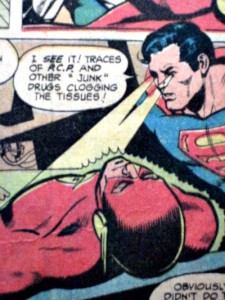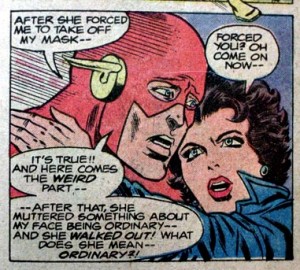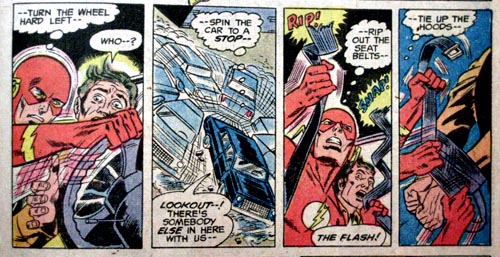One of the seminal writers in DC Comics’ history, Cary Bates has crafted adventures featuring comics’ greatest characters for all or part of six decades. From his years as one of the main Superman scribes to 2010’s The Last Family of Krypton, he has left his mark on the world’s finest superheroes, experimenting with the genre and storytelling to stunning effect.
His first Flash story, 1968’s “The Flash – Fact or Fiction,” has been collected numerous times among the Greatest Flash Stories Ever Told. But that tale is, literally, just the beginning. After taking over as full-time writer in 1971 with Flash #209, Bates spent an amazing 14 years on the title until its cancellation in 1985. He also authored the memorable Flash stories featured in Adventure Comics and the DC Special Series in the late 1970s.
With Showcase Presents: The Trial of the Flash set for a July release, we’ve been running annotations of Bates’ Flash issues that laid the groundwork for the Trial story and the final years of The Flash. We’ll take a break over the next two weeks to hear from the man himself, and learn how he took a character ensconced in Silver Age sensibilities and created an emotionally-charged super-saga far ahead of its time.
Q: Can you describe your experience around the time Julius Schwartz left the Flash title after issue #269? You continued to work with Schwartz on other titles, but what went into the process of changing gears and working with new editor Ross Andru on a new look for Flash? Did it help that you had both been edited by Schwartz during mostly separate, lengthy periods?
Cary Bates: As I recall, at the time Ross came on, sales on Flash were stagnant, so DC was open to a “new direction” (though I’m not sure they had any inkling how radical those changes would prove to be). Ross had drawn my very first Flash story in 1968 (“The Flash—Fact or Fiction”) but he and I had never met prior to his becoming editor. We were both somewhat wary of each other at first, but after a couple of issues we had established a comfortable working relationship. But although Ross had worked for Julie as an artist, to my knowledge this was his first time editing… and to say his approach to Flash was 180 degrees apart from Julie’s version would be an understatement.
Q: How did you feel about the changes themselves, in particular Iris’ fate and the more “adult” subject matter like relationship woes, psychology, crime, violence and drugs? There was no transition period, and issues #269 and 270 could not have been any more different in tone. Also, were these ideas you had been holding onto and initiated, or were the changes coming from editorial.
CB: It was Ross’s contention that the most effective way to “shake things up” would be to make Barry Allen’s a living hell with a series of problems and setbacks that would culminate in Iris’s murder. Once I fully grasped where and how far Ross wanted to go, I embraced the new direction. Realize at this time I had been writing the Flash book for Julie for 8 or 9 years, turning out stories for him that were for the most part a seventies update/variation on the silver age Flash immortalized by Gardner Fox and John Broome. So by the time Ross came on board, I was totally open to the notion of trying something new. With the agreed-upon understanding that The Flash would become a darker and more “adult” book, the initial story elements (the Nephron Project, Clive Yorkin, Melanie the ESP girl, PCP/Angel Dust, etc.) that came out of our plotting sessions were just hints of what was to come.
Q: There are numerous psychological and parapsychological references and themes in the issues surrounding the death of Iris. ESP had shown up previously in your Flash work, but we also see some references to behaviorism via A Clockwork Orange in the Nephron Process. Was this something you had an interest or background in at the time? Fans seemed to really pick up on a lot of it, according to the letter columns.
CB: Ross and I shared an interest in all things parapsychology and the paranormal, so it was no surprise this was reflected in some of the storylines. (Brief aside: in the months before SUPERMAN THE MOVIE opened there was no advance buzz and no one knew quite what to expect… but I distinctly remember Ross telling me he had been to a psychic who assured him the movie would be a massive hit. And the rest as they say is history…
Q: Melanie, the Girl with the Master Mind, seems to be a commentary on fandom and their role in the impetus for changes in the title. Was her introduction and Flash’s near-retirement a way to re-establish and highlight the character’s durability? Barry comes out of the whole experience even more confident of his Flash role, even in the face of Iris’ death.
CB: I hadn’t thought about that particular interpretation of the character, but I think it fits. Certainly she was intended as a harbinger of the travails to come. And then there was the specter of unfaithfulness; though Iris’s fears regarding Melanie and Barry were unfounded, the fact that she could even question his fidelity was an example of just how far the tone of the book had shifted from the Broome-Fox era when Barry’s most egregious indiscretion as a husband was his tendency to be “late”.
Q: Irv Novick was of course the artist for a large portion of your time on Flash. After a couple of fill-in issues by Rich Buckler after Novick’s final turn (#270), Alex Saviuk ended up handling the pencils for issues #274 – 279. You two seemed to click, especially on the super-speed sequences and the conveyance of a wide range of emotions. Did you interact much with any of these artists, and what were your thoughts on the results?
CB: Alex and I had a good working relationship but he probably had more contact with Ross during that period. Because Ross had spent the vast majority of his comics career as a penciller, he was very hands-on when it came to the art, including the panel breakdowns. My plotting sessions with him were so detailed we would work out how many panels would be devoted to each scene or sequence, so I imagine he was working pretty closely with Alex as well.
Q: A real sense of loss and pain permeates the story of Iris’ murder, especially in issue #276 where Barry learns she has died. The scene where Detective Curtis breaks the news and returns Iris’ ring is difficult to read because it is so affecting. You really got to push the limits of Barry’s psyche, and then pushed him even further with the influence of PCP/Angel Dust. What went into executing those heavier emotional elements, and did it give you more range for a scene like the full-speed JLA showdown in the Satellite?
CB: As I’ve already said, once Ross and I committed to putting Barry’s life on this dark path we were determined to push the limits farther than anything seen before in that era… especially for a mainstream DC hero. Case in point: the notion of a grief-stricken Flash high on PCP going to his fellow JLAers and begging them to use their powers and abilities to bring his dead wife back to life. Ross and I knew this was such a drastic departure from the tenets of the established Flash canon that many readers (and perhaps even some people at DC as well) would be caught off-guard… but that was our intention.
Q: Was the plan all along to reveal Professor Zoom as Iris’ killer, despite the Flash’s personal manhunt for Clive Yorkin, or was that decided while the story was already underway?
CB: Thirty years later I can’t be 100% certain of this, but knowing the way I plot it’s a good bet that I had Zoom in mind as the real killer from the get-go. But we wouldn’t have let that foreknowledge stop us from milking the crazy Clive Yorkin character first for all he was worth.
Be sure to check back next week, when we’ll discuss the events leading up to the Trial and the author’s upcoming work.






Great interview! Bates’ run was what hooked me for a lifetime of Flash reading–my first issue was #278.
Greg,
Great interview! I look forward to reading more.
This is about the time I jumped onboard the title, so it holds fond memories.
Love the interview!
Seriously great work Greg. Can’t wait to see the rest.
Thanks so much for doing this interview. The drastic change with issue 270 is an era I’ve always been curious about — and this has already answered something I’d long wondered about: that Iris was marked for death from the inception of the change.
Can’t wait for part 2!
Nice work! I remember being, as they say, surprised and delighted by the change in tone for the book. Barry suddenly in Starsky and Hutch mode, madmen, drugs, death … and women in Batgirl costumes just have no luck.
Oh, and Iris’ awful hair. Well, I thought it awful then, I rather like it now. And I now realise that in my memory, I had Melanie muddled with Stacey Conwell.
I blame speedsters, messing with reality …